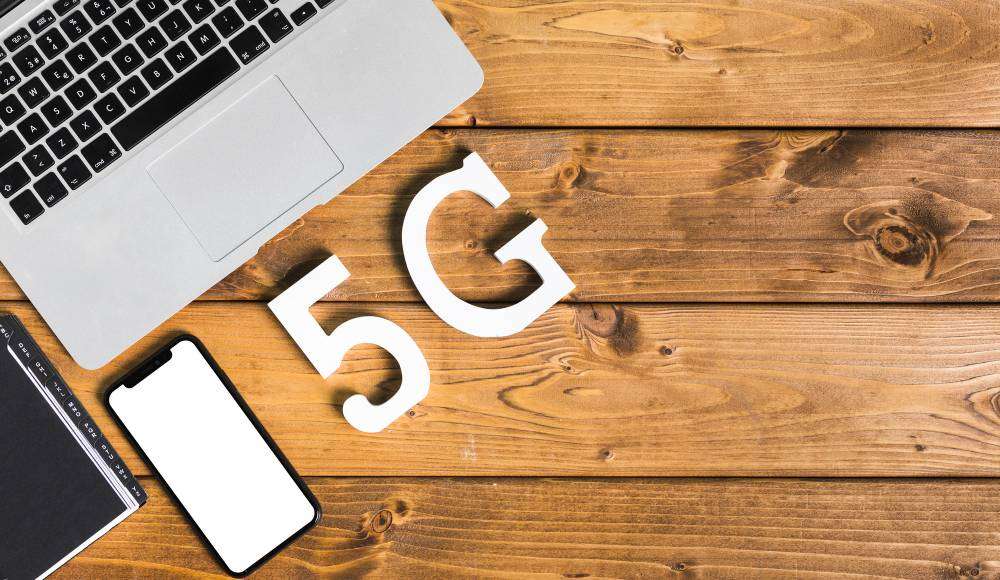
The world of technology is constantly evolving, and the next big leap in connectivity is here: 5G technology. With the promise of faster speeds, lower latency, and the ability to connect a massive number of devices simultaneously, 5G is set to transform industries, including IT, in profound ways. While 5G has been largely associated with mobile networks and smartphones, its potential to reshape the IT landscape is even more significant. From cloud computing to the Internet of Things (IoT), 5G technology is poised to drive innovation, enhance performance, and open new opportunities across the IT sector.
In this blog, we’ll explore what 5G technology is, how it works, and the profound impact it will have on various aspects of IT.
Hire a Developer
What is 5G Technology?
5G, the fifth generation of mobile networks, represents a major upgrade from its predecessors, offering faster speeds, lower latency, and increased reliability. It is designed to support the exponential growth of devices and data and to meet the demands of emerging technologies such as IoT, augmented reality (AR), virtual reality (VR), and autonomous systems.
While 4G (the current widely used mobile standard) was primarily focused on improving mobile internet speeds and data transmission, 5G is about enabling a connected world in which devices can communicate seamlessly and instantaneously. 5G is characterized by:
- Higher Data Speeds: 5G can theoretically achieve speeds up to 100 times faster than 4G, offering download speeds of up to 10 Gbps.
- Low Latency: 5G has incredibly low latency (around 1 millisecond), which is crucial for real-time applications like autonomous vehicles, gaming, and remote surgery.
- Massive Connectivity: 5G can support up to 1 million devices per square kilometer, making it ideal for the rapidly expanding Internet of Things (IoT).
- Improved Reliability and Network Slicing: 5G allows for customized network capabilities for specific use cases, ensuring optimal performance for different types of applications.
Now that we understand the basics of 5G technology, let’s delve into how this advancement will impact the IT landscape.
-
Revolutionizing Cloud Computing and Edge Computing
The advent of 5G is expected to dramatically reshape cloud and edge computing. As 5G brings faster internet speeds and ultra-low latency, it enables real-time data processing that was previously impossible. This has significant implications for both cloud and edge computing environments.
Cloud Computing:
- Faster Data Access: With 5G, cloud services will see a major improvement in terms of speed and responsiveness. Enterprises will be able to process and access cloud-based applications with minimal lag, even for data-heavy tasks like machine learning and big data analytics.
- Improved Collaboration: High-speed connections will enable more fluid collaboration in cloud-based environments, enhancing real-time data sharing and video conferencing experiences, especially for remote teams.
- Enhanced Security: 5G networks allow for greater network security with the introduction of Network Slicing, which enables the creation of multiple virtual networks, each optimized for different services and use cases.
Edge Computing:
- Faster Data Processing at the Edge: With low-latency connections, edge computing will become even more effective. 5G allows data to be processed closer to the source, reducing the need to send information to centralized cloud servers, which leads to faster decision-making and response times.
- Real-Time Applications: Edge computing combined with 5G enables real-time applications like autonomous vehicles, industrial IoT, and smart cities, where data processing speed is critical.
- Bandwidth for High-Volume Data: 5G enables edge devices to handle more data without overloading the network, making it ideal for applications requiring high bandwidth, such as streaming high-definition video or real-time analytics.
-
The Internet of Things (IoT) and Smart Devices
The Internet of Things (IoT) has been rapidly growing, and 5G is poised to take it to the next level. The combination of high-speed data transfer and low latency is ideal for the vast network of connected devices that is expected to grow exponentially in the coming years.
Massive IoT Connectivity:
- Scalable Connectivity: 5G can support a massive number of IoT devices—up to 1 million devices per square kilometer—enabling the development of smart cities, smart homes, and connected industries.
- Low-Power, High-Performance Devices: With 5G, IoT devices will require less energy to transmit data, allowing for longer battery life in remote and portable devices. This is crucial for industries that rely on sensors, wearables, and other devices that need continuous connectivity.
- Real-Time Monitoring and Control: 5G enhances IoT by allowing for real-time monitoring of connected devices and systems. This could lead to breakthroughs in industries like healthcare (e.g., remote patient monitoring), manufacturing (e.g., predictive maintenance), and agriculture (e.g., smart farming).
-
Impact on Data Centers and Network Infrastructure
As 5G becomes more widespread, the demand for more efficient and scalable data centers will grow. 5G’s massive bandwidth and low latency will lead to changes in how data centers are designed and operated, as well as how data is transmitted across networks.
Data Center Transformation:
- Increased Demand for Edge Data Centers: With 5G facilitating more edge computing applications, there will be a need for smaller, localized data centers that process data closer to end users. This could reduce latency and improve the efficiency of real-time applications.
- Increased Data Traffic: As 5G enables more devices to connect and generate more data, data centers will need to scale to accommodate this increased data flow. This will push for innovations in storage, processing power, and bandwidth management to handle the growth.
- Optimization and Automation: AI and machine learning, paired with 5G, can help optimize data center operations. From predictive maintenance to real-time energy management, these technologies can automate much of the management of physical infrastructure in data centers.
-
Enhanced AI and Machine Learning Capabilities
The combination of 5G and AI/Machine Learning (ML) will enable faster data processing, enhanced algorithms, and more efficient model training, opening up new possibilities in fields like robotics, natural language processing (NLP), and real-time analytics.
AI-Powered Real-Time Decisions:
- Faster Data Processing for AI: 5G’s ultra-low latency allows AI and ML algorithms to make real-time decisions faster. For example, autonomous vehicles can process data from sensors and make immediate driving decisions without delays.
- More Advanced AI Applications: With 5G, we can expect more complex AI applications, such as real-time facial recognition, voice recognition, and smart surveillance systems, all powered by the ability to process data faster and more efficiently.
-
Cybersecurity Considerations
As 5G enables more connected devices and real-time data transfer, it introduces both opportunities and challenges for cybersecurity in IT systems.
New Vulnerabilities:
- Expanded Attack Surface: With the proliferation of connected devices, the attack surface for hackers grows significantly. Each new device introduces potential security weaknesses, and organizations will need to adopt more robust cybersecurity measures to protect against these threats.
- Network Slicing for Security: 5G’s network slicing allows for the segmentation of networks, which can provide improved security by isolating certain types of traffic and protecting critical infrastructure from malicious activity.
Improved Security Tools:
- Advanced Threat Detection: AI-driven cybersecurity tools, enabled by 5G, can detect threats in real-time by processing data at the edge or within a highly optimized network.
- Encrypted Communication: 5G provides enhanced encryption methods to secure data transmission, which will be critical as more sensitive data is transmitted across mobile networks.
Conclusion: The IT Revolution with 5G
5G technology is not just a new network standard for faster mobile phones; it’s a game-changer for the entire IT ecosystem. By enabling ultra-low latency, high-speed connectivity, and the ability to support millions of devices, 5G is poised to accelerate the growth of IoT, revolutionize cloud and edge computing, enhance AI capabilities, and significantly impact network infrastructure and cybersecurity.
For businesses and IT professionals, the arrival of 5G presents both challenges and opportunities. As industries increasingly adopt 5G, staying ahead of the curve with the latest developments in network technology will be crucial for maintaining a competitive edge.
In the coming years, 5G will unlock new possibilities for innovation and efficiency, driving the next wave of technological advancements. Whether it’s through enabling smarter cities, autonomous vehicles, or real-time healthcare solutions, 5G’s impact on IT will be profound, ushering in a new era of connectivity.













